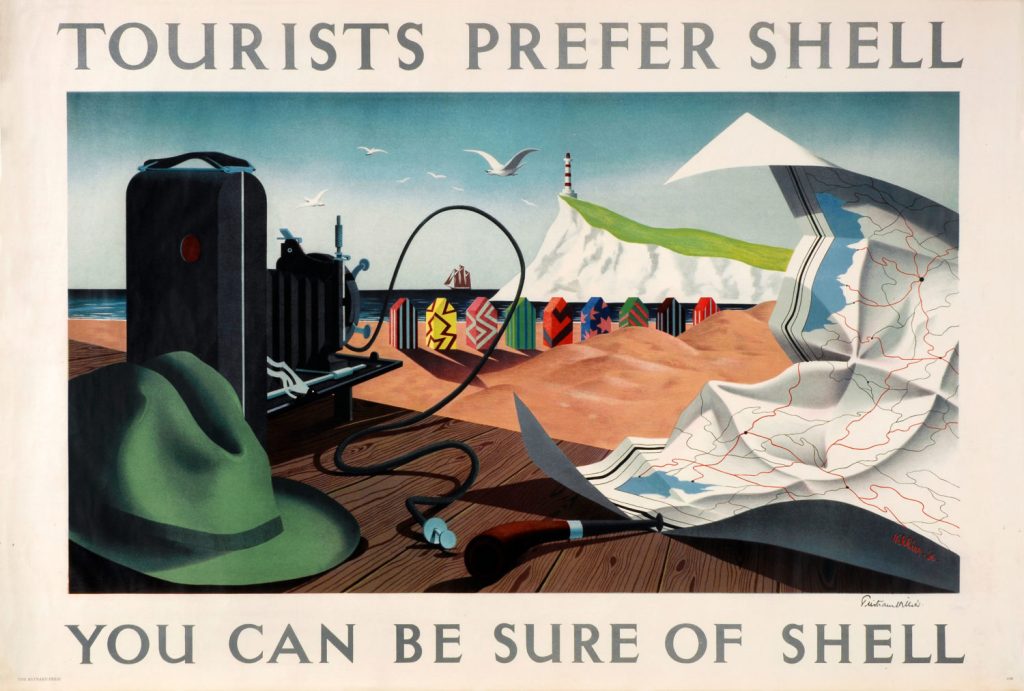OTD in early British television: 9 December 1938

John Wyver writes: The Christmas quotient of programming was ramped up on the evening of Friday 9 December 1938 with a 10-minute broadcast, Presents for the Children no 1, presented by the well-regarded painter Edward Halliday. The artist recommended a number of prints that were appropriate for the room that the middle-classes still called the nursery, including Tristram Hiller’s 1936 slightly surreal (and glorious) poster ‘Tourists Prefer Shell’ (above).
Other apporoved reproductions included works by John Piper, Eric Ravilious, Graham Sutherland and illustrator Pegg Wickham, as well as the more traditional ‘Country Feast’ by Breughel and Gainsborough’s ‘Margaret, the Painter’s Daughter’. The scheduling indicated that this was very much a transmission for parents, and indeed the pre-war Television service only introduced programming specifically conceived for younger viewers in the summer of 1939, and then only tentatively. As Radio Times promised, however, other pre-holiday broadcasts would show children’s books and Christmas trees.

Earlier in the decade Edward Halliday had contributed to two radio series. In Artists at Work (1932) he was questioned about ‘how to appreciate art’ as he was sketching the interviewer, Stanley Casson, and across five episodes of Design in Modern Life (1934), he spoke with a range of design experts. His voice and confidence impressed the Broadcasting House hierarchy, and he was tried out on a couple of occasions as an outside broadcast commentator. After the war, he was one of those who contributed their voice to Television Newsreel.
As part of her mission to improve the taste of her largely suburban viewers, Alexandra Palace Television producer Mary Adam recruited Halliday to present Masterpieces on Your Walls in September 1938. In this he recommended prints for the rooms of grown-ups, including works by Botticelli, Van Gogh, Cezanne and Braque, as well as Paul Nash, Ravilious again, and Christopher Wood. The internal PasB record noted that techniques of modern colour reproductions ‘bring a wide range of good pictures, old and new, within reach of all but the very poor’.
More Masterpieces on Your Walls followed a month later, proposing as appropriate and affordable decoration Goya, Picasso and Franz Marc, as well as reproductions of paintings by Laura Knight and Russell Flint.
The October 1938 schedule also featured Seen in the Row, in which Halliday discussed with dress designer Richard Busvine painting a scene showing a fashion parade in Hyde Park. Five female models showed off a number of costumes before they came together ‘in a suitable group with a dog and [were] made into a sketch by Mr Halliday’.
After the war, Halliday was commissioned in 1948 to paint Princess Elizabeth for the Drapers’ Company, and the success of this led to portraits for many more illustrious sitters.
Leave a Reply